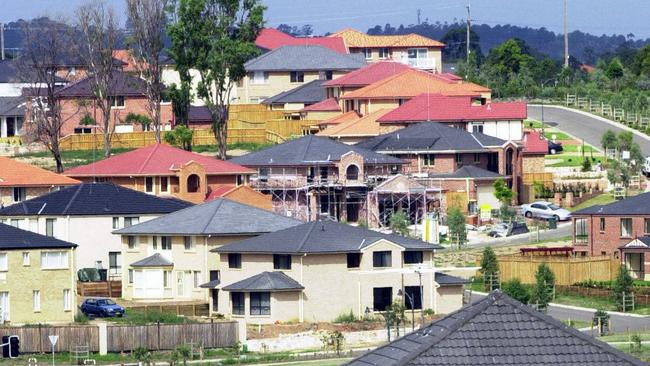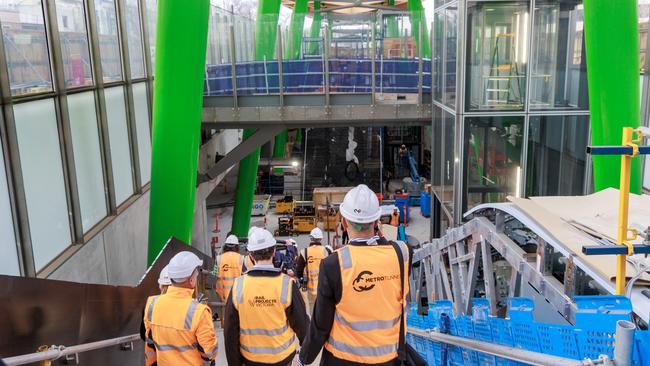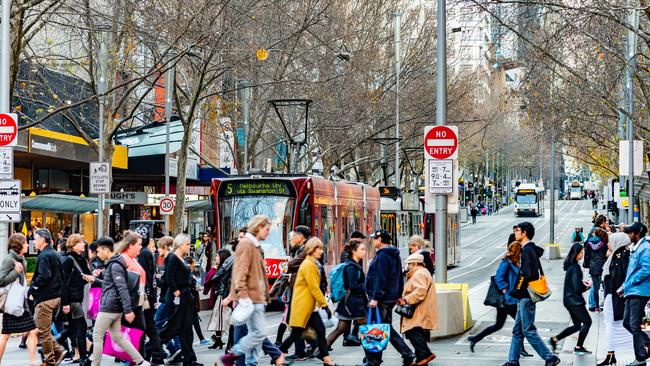Rising population: what next for the Lucky Country?
The nation is on the cusp of a new era – and our rising population will drive us there.

It is a fair question for anyone in business in Australia to ask. Or indeed for any young Australian to ask. Is Australia a good place to invest their youth, energy, time, capital over the coming decade? I say the answer is unequivocally yes. And here is the reason why.
Although, to be fair, the question should be slightly reframed. Is there another country that is likely to offer better prospects than Australia over the decade to 2033? I say the answer is no. And especially in property. And the reason why comes back to demographics.
Over the coming decade, the Australian population is expected to increase by up to four million due to elevated levels of immigration and to a moderate birthrate. This combination delivers an annual growth rate of close to 1.5 per cent. Whether growth at this pace is good or bad for Australia is a debate for another time.
A continuation of this rate adds about two million people to both Melbourne and Sydney by 2040. The equation of two million added to a base of five million over 17 years (or so) in a Western car-based city delivers unrivalled opportunity in property and infrastructure.

Perhaps you’d like to shift to London instead? Here is a greater metropolitan area, largely contained within the M25 orbital, with a current population of nine million that will, at best, expand to 10 million by 2040. That’s one million added to a base of nine.
Or maybe you’re tempted by the exotica of Paris, which currently has 10 million people, pushing to 11 million by 2040. That, too, is one million added to a base of 10.
Which of these cities offers best (property) career prospects over, say, the next 20 years? Australia’s fast-growing big capitals or the slow-growing global cities of London and Paris. (Why are we importing Spanish drilling equipment for Melbourne’s metro tunnel when it is Australia’s burgeoning capitals that will need future tunnelling, not Madrid?)
There are faster growing cities than Melbourne and Sydney (and to which I would add SEQ and Perth) but remarkably few that are similar in scale, that are car-based (enabling the spread of suburban housing), and that offer developed-world consumer spending power.

There was a time about a decade ago when by my calculations (drawing in UN data) burgeoning Beijing was adding upwards of 600,000 people a year … in a country that then had a one-child-policy birthrate. (This growth was largely due to rural-urban migration.) Stellar growth, but not the kind of property market that can be relied upon to build a long-term home-building business.
(Rural-urban migration in China has since slowed.)
The cities that are most proximate to “our” biggest cities are places such as Dallas-Fort Worth, Houston, Atlanta, Miami, Phoenix and maybe, Toronto. I am discounting vaster cities such as Los Angeles, Chicago and San Francisco Bay Area on lifestyle and security grounds.
Every time I am in Perth’s outer suburbs, I get the feeling I am on the edge of Dallas: the only difference being a plethora of Ford Ranger utes rather than Ford F-100 pick-up trucks.
It’s about being in the right place at the right time in history. And in Western property development the right place to be after a global pandemic, about 50 years after the introduction of contraception, is the safe, prosperous, English-speaking, temperate-wintered, immigration-inclined, tolerant-peopled continent of Australia.
While other developed nations struggle to deliver workers, to pay taxes, to hold back the rising tide of debt, Australia can quite methodically – deliberately, even – attract young skilled worker-bees (many of whom arrived as foreign students) to invest their best years (say the ages, 25-55) into our nation and not into their home countries.
And then there’s the issue of the Australian millennial generation the five-million-plus reverberation (meaning “kids of”) baby boomers and who are now transitioning (in their late 30s) from singledom and coupledom to full-on teenage-prepping family life.
If ever there was a scramble for a generation’s “forever home” it is the patch of time that stretches from now, from 2023, towards and beyond this decade’s horizon. And beyond that decade’s-end cliff, there lies yet another milestone that will deliver even more spending power to this generation courtesy of an unprecedented intergenerational transfer of wealth.
I’m not going into how this transfer comes about. You work it out.
Where else would you rather be, indeed.
We freak out when our national debt approaches 50 per cent of GDP; our greatest long-term trading partner Japan appears comfortable with a debt ratio that has recently sailed past 200 per cent. We may well be in debt, but we’re mightily troubled by the prospect of passing on that burden to the next generation.

And so, as long as we continue to offer quality of life, the opportunity to build a business, pathways to achieve homeownership, as well as safety and security for family living, we will continue to attract youth and entrepreneurial energy from other nations.
But this equation – that has so benefited Australia in the past – also works in reverse. If through poor governance, arrant mismanagement, a diminution of civic unity, maybe even a dash (or splash) of climate calamity and Australia is no longer regarded as a good place to invest youth and energy, then our talent – and capital – could be attracted elsewhere. And thus would begin an unstoppable spiral away from prosperity.
We are a successful nation because we offer existing and new residents a better chance of a good quality of life than do other nations.
We are barely 26 million people and yet, according to the IMF, we rank as the 13th largest economy on Earth. We rank 10th (out of 195 nations) by the measure of GDP per capita. We spend barely 2 per cent of our GDP on defence, whereas our generous American allies allocate upwards of 3 per cent. The Kiwis spend one per cent.
Ukraine, according to the World Bank, spends 34 per cent.
Our life expectancy sits close to the mid-80s, and our birthrate hovers at 1.6 births per woman. In Japan, this rate is less than 1.0. Our tax rate from all sources – federal, state, local – by my calculations from a range of sources is about one-third of GDP. In Denmark, this proportion is closer to 48 per cent.
For the most part, most Australians can leave their bags in parked cars in well-lit areas overnight, confident in the knowledge that their belongings will remain intact. Try that in today’s San Francisco, once the home of gentle people and of flower power.
Where else but Australia would you rather be? Not London, not Paris, not the big cities of America. Do you really want to move to Canada? Lovely people but too cold for me and for most Australians. What about New Zealand? Well, there are vastly more Kiwis living here (530,000) than Aussies living there (76,000). And that’s because we offer greater scale, depth and opportunity.
Australia is far from perfect. That much is evident every week in the news. However, the frustrating thing for Australia’s knockers is that as flawed and as folly filled as we are, there is simply no better (obvious) place offering young people the opportunity to pursue a better quality of life.
About 30 per cent of the Australian nation was born outside the Australian continent. Immigrants, foreign students, backpackers, seasonal workers and others come to this place for the opportunities we deliver.
It may be by dumb luck, by divine providence, by simply being in the right place at the right time – frankly I don’t care how we do it – but we Australians do indeed do it, we deliver for not all but for most of our compatriots an unparalleled quality of life from what we happily regard as the sweetest spot on Earth.
And which brings me to what should be Australia’s focus based on the demographic context of our nation. We should be world’s best practise at building, construction, city building (infrastructure), home development. Just as we should be, and are, world’s best practise in mining, resources and in parts of agribusiness (I wish we had a global agribusiness business at scale).
We should be more self-sufficient in engineering, in shipbuilding, in defence and possibly in pharmaceuticals. We should have a missile manufacturing capability, and an enabling corporate asset (based in Melbourne, thank you) as opposed to a jazzed-up local office of an American manufacturer.
We should have, and have recently developed, an Australian space agency. We should have world-leading capabilities in AI. We probably don’t need another fast food chain.
Australia’s best asset, I think, is our tolerant and easy going nature. We aren’t fussed by levels of immigration that would grate in other nations. We are adaptable, generally fair-minded, and have high expectations when it comes to the standard of living that we expect for all.
Put all that together, and you have one of the best, if not the best, places in the world to do business over the next decade. Indeed, where else would you want to be but, in this land, this nation, this blessed spot, this Australia?
Bernard Salt is founder of The Demographics Group; data by data scientist Hari Hara Priya Kannan




To join the conversation, please log in. Don't have an account? Register
Join the conversation, you are commenting as Logout